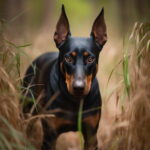
Which Is The Most Dangerous Dog Breed?
Introduction
When it comes to dog breeds, each has its own unique traits and characteristics. Some are known for their loyalty, while others are celebrated for their playfulness. However, there is also a category that has gained notoriety for their perceived danger. In this article, we’ll delve into the world of the most dangerous dog breed. We will explore their history, characteristics, and the factors that contribute to their reputation.
Understanding the Most Dangerous Dog Breed
What Sets Them Apart?
The term “most dangerous dog breed” is a loaded one and can evoke strong emotions in dog lovers and experts alike. It’s crucial to understand that this label is not a black-and-white classification, but rather a subjective judgment that is often shaped by various factors. To delve deeper into what sets these breeds apart, let’s explore the key aspects that contribute to their reputation.
Perception vs. Reality
One of the most significant challenges in determining the most dangerous dog breed is distinguishing between public perception and scientific reality. Many breeds have been unfairly stigmatized due to isolated incidents or media sensationalism. The truth is, dogs of any breed can display aggressive behavior when not properly trained, socialized, or cared for.
Breed History
The history of a particular breed can play a role in its perceived danger. For instance, breeds like the American Pit Bull Terrier have a complicated history, originally bred for bull-baiting and later as farm dogs. Their tenacity and strength were once prized qualities but have also been misunderstood and misused.
Individual Variability
It’s important to recognize that a dog’s behavior is not solely determined by its breed but is highly influenced by individual temperament. Just as humans have unique personalities, dogs do too. Factors such as genetics, early experiences, and upbringing have a profound impact on a dog’s behavior.
Training and Socialization
Proper training and socialization are critical for any dog but are especially important for breeds often labeled as dangerous. Well-trained and well-socialized dogs are less likely to exhibit aggressive behaviors and are more likely to be well-adjusted family pets.
Responsible Ownership
Responsible ownership plays a pivotal role in shaping a dog’s behavior. This involves providing proper care, regular exercise, a loving environment, and the necessary training to ensure the dog becomes a well-behaved and safe companion. Owning a dog, especially one of these breeds, is a significant responsibility that should not be taken lightly.
Stereotypes and Media Influence
The portrayal of certain breeds in the media can perpetuate stereotypes and fears about their dangerousness. Isolated incidents of attacks, often sensationalized in the news, can contribute to the negative image of these breeds. It’s essential to critically examine the information presented in the media and recognize the importance of individual dog assessment.
Breeds Under Consideration
We’ll be discussing breeds that have been labeled as potentially dangerous by some, but it’s essential to remember that each dog is unique, and breed generalizations should be taken with a grain of salt. The breeds we’ll explore include:
- American Pit Bull Terrier
- Rottweiler
- German Shepherd
- Doberman Pinscher
- Bullmastiff
- Siberian Husky
- Alaskan Malamute

Characteristics of the Most Dangerous Dog Breed
Temperament and Behavior
The temperament and behavior of a dog can vary widely even within the same breed. However, these breeds are often associated with assertiveness, protectiveness, and strength.
Physical Traits
These breeds typically possess strong and powerful physical traits, which may add to their perceived danger. They are muscular, agile, and often have a commanding presence.
Training and Socialization
Proper training and early socialization are crucial for these breeds to ensure they grow up to be well-behaved and non-aggressive dogs.
Addressing the Notoriety
Media Influence
The media has played a significant role in perpetuating the stereotype of these breeds as dangerous. Rare incidents are often sensationalized, leading to fear and misunderstanding.
Responsible Ownership
Owning any dog, especially those deemed potentially dangerous, comes with great responsibility. It’s essential for owners to be educated, committed, and aware of their dog’s needs.
Legal Implications
In some places, there are legal restrictions on owning these breeds. It’s important to research and abide by local laws and regulations.
FAQs (Frequently Asked Questions)
Are these breeds inherently dangerous?
These breeds are not inherently dangerous, but they may have characteristics that require responsible ownership and proper training.
Can they be good family pets?
Yes, with the right care, training, and socialization, these breeds can make excellent family pets.
What should I consider before getting one of these breeds?
Research the breed thoroughly, commit to training and socialization, and be prepared for the responsibility of ownership.
Are there any specific laws related to these breeds?
Laws and regulations regarding these breeds vary by location, so it’s important to check your local ordinances.
Do these breeds need more exercise than others?
Yes, many of these breeds are active and require ample exercise to stay healthy and happy.
Can I adopt one of these breeds from a shelter?
Yes, many dogs of these breeds are available for adoption. Shelters and rescue organizations often have them looking for loving homes.
Conclusion
In conclusion, labeling a dog breed as the “most dangerous” is a complex matter. It’s crucial to recognize that individual temperament, upbringing, and training play a significant role in a dog’s behavior. These breeds, while possessing unique characteristics, can be loving and loyal family pets with the right care and attention. Responsible ownership is the key to ensuring that these dogs are well-behaved and safe companions.


Leave a Reply